The 1st Armoured Division is an armoured division of the Indian Army, headquartered at Patiala, Punjab. It is part of II Corps of the Indian Army's Western Command.

Tikka Khan was a Pakistani military officer who served as the first chief of the army staff from 1972 to 1976. Along with Yahya Khan, he is considered a chief architect of the 1971 Bangladesh genocide which according to independent researchers led to the deaths of 300,000 to 500,000 people.

Lieutenant General Amir Abdullah Khan Niazi was a Pakistani military officer. During the Bangladesh Liberation War and the Indo-Pakistani War of 1971, he commanded the Pakistani Eastern Command in East Pakistan, he signed the instrument of surrender as in 16 Dec. '71 his forces had to surrender to the Indian Army's Eastern Command's commander Lieutenant General Jagjit Singh Aurora by the order of the then President of Pakistan Yahya Khan.

Operation Grand Slam was a key military operation of the Indo-Pakistani War of 1965. It refers to a plan drawn up by the Pakistan Army in May 1965 that consisted of an attack on the vital Akhnoor Bridge in Jammu and Kashmir, India. The bridge was not only the lifeline of an entire infantry division of the Indian Army, but could also be used to threaten the city of Jammu, an important logistical point for Indian forces. The operation saw initial success, but was aborted when the Indian Army opened a new front in the Pakistani province of Punjab in order to relieve pressure in Kashmir. This forced Pakistan to abandon Grand Slam and fight in Punjab, thus the operation ended in failure and the stated objectives were not achieved.
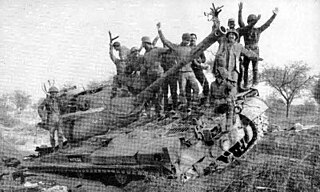
The Battle of Basantar, also known as the Battle of Shakargarh or Battle of Barapind, was one of the vital battles fought as part of the Indo-Pakistani War of 1971 in the western sector of India. The Indian troops won a hard-fought battle that secured this area in the Punjab/Jammu sector. The name Battle of Basantar actually encompasses the entire gamut of battles and skirmishes fought in the Shakargarh sector.

The Battle of Chawinda was a major engagement between Pakistan and India in the Second Kashmir War as part of the Sialkot campaign. It is well known as being one of the largest tank battles in history since the Battle of Kursk, which was fought between the Soviet Union and Nazi Germany in World War II.
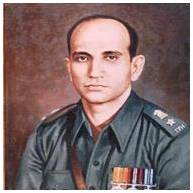
Lieutenant Colonel Ardeshir Burzorji Tarapore, PVC, was an Indian military officer and posthumous recipient of India's highest military award, the Param Vir Chakra. After completing his schooling in Pune, Tarapore joined the Hyderabad Army, and was commissioned in January 1942. Initially he joined the infantry, but was later transferred to an armoured regiment, the 1st Hyderabad Imperial Service Lancers. During World War II, Tarapore saw action in the Middle Eastern theatre of the war.
Major General Akhtar Hussain MalikHJ SPk was a Pakistani senior army officer, and a widely decorated war hero of the Pakistan Army due to his leadership and command during the Indo-Pakistani War of 1965.
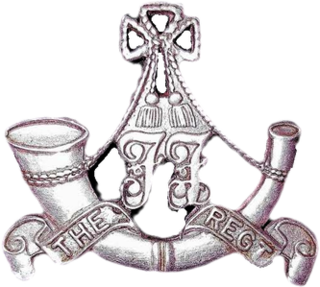
The Frontier Force Regiment is one of the six infantry regiments of the Pakistan Army. They are popularly known as the Piffers in reference to their military history as the PIF of the British Indian Army, or as the FF. The regiment takes its name from the historic North-West Frontier, a former province of British India and later Pakistan.

The 10th Indian Infantry Division was a war formed infantry division of the Indian Army during World War II. In four years, the division travelled over 4,000 miles (6,400 km) from Tehran to Trieste, fought three small wars, and fought two great campaigns: the Anglo-Iraqi War, the Invasion of Syria–Lebanon, the Anglo-Soviet invasion of Iran, the North African Campaign, and the Italian Campaign.
The 11th Infantry Division is an active formation of the Pakistan Army. It is currently deployed in Lahore as part of IV Corps, and is responsible for the defence of that city and the surrounding areas.

The 6th Armoured Division is a Pakistan Army armoured division currently based in Gujranwala, in Punjab Province.

The Guides Cavalry (Frontier Force) is an armoured regiment of the Pakistan Army which was raised in 1846 as The Corps of Guides. During more than a hundred and fifty years of military service, the regiment has earned the reputation of one of the most renowned military units in the world.

The 20th Lancers is an armoured regiment in the Armoured Corps of the Pakistan Army. It is considered to be the successor of the old 20th Lancers of the British Indian Army. As part of a reorganization of the British Indian Army, the original 20th Lancers was formed in 1922 by the amalgamation of the 14th Murray's Jat Lancers and the 15th Lancers.
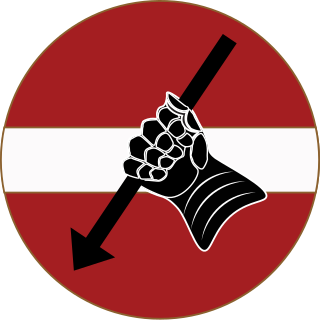
The IV Corps is field a corps of the Pakistan Army, headquartered in Lahore, Punjab, Pakistan. Having established in January 1966, it is Pakistan army's of one of ten maneuver formation which saw its deployment against the Indian Army in 1971.

The Battle of Phillora was a large tank battle fought during the Indo-Pakistani War of 1965. It commenced on 10 September when the Indian 1st Armoured Division, with four armoured regiments and supporting forces under command, attacked positions in the Sialkot sector held by Pakistani 6th Armoured Division. After three days the Pakistanis withdrew with the loss of 66 tanks. The Indians admitted to the loss of 6 Centurions.

The Eastern Command of the Pakistan Army also known as III Corps was a corps-sized military formation headed by a lieutenant-general, who was designated the Commander 3 Corps. After the partition of India by United Kingdom, the Islamic Republic of Pakistan was divided into two territories separated by 1,000 miles (1,600 km). Most of the assets of the Pakistan armed forces were stationed in West Pakistan; the role of the Pakistan armed forces in East Pakistan was to hold that part of the country until the Pakistani forces defeated India in the west. The Pakistan Army created the Eastern Command, with one commander in the rank of Lieutenant General responsible for the command. The armed forces, had drawn up a plan to defend Dhaka by concentrating all their forces along the Dhaka Bowl.

Major General Abrar HusainHJ MBE (1918–1992) was a Pakistani senior army officer who served in World War II and the Indo-Pakistani War of 1965.
Gadgor is a small Town in Pasrur Tehsil, Sialkot District, Pakistan. Towns near Gadgor include Behrampur, Jahar, Joshan, Chobara, chak meer da,Gillan Wala, Chawinda, Kotli Mughlan and Philoura. Its geographical coordinates are 32° 24' 0" North, 74° 46' 0" East. Gadgor is in the centre of the Chawinda and Kingrah sectors.
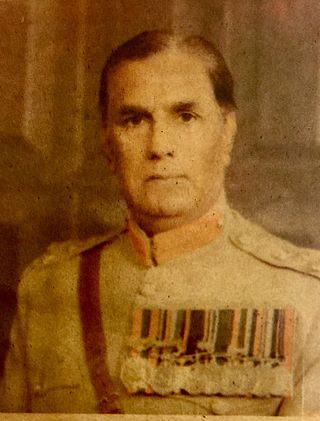
Brigadier Amjad Ali Khan Chaudhry HJ was a Pakistani military officer who fought in the Indo-Pakistani War of 1965. He was decorated for his service during the Battle of Chawinda.














